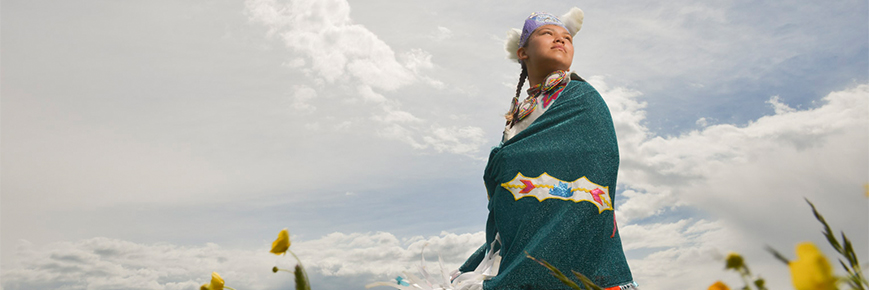
© Scott Munn / Parks Canada
First Nations
Rocky Mountain House National Historic Site
Rocky Mountain House and Acton House traded with eight distinct First Nations. Situated as it was during its 76 years of operation, in the parklands close to both the mountains and prairies, Rocky Mountain House drew upon the Indigenous people and resources of these diverse landscapes.
Ktunaxa (Kutenai)
- Live mainly in the Columbia River valley west of the Rockies.
- In 1799, they had a population of about 1,200 people.
- They crossed the Howse and Crowsnest Passes to reach the plains where they hunted and traded.
- The fur trade companies built their posts here with the hope of attracting Ktunaxa traders. However, only one small band of fewer than 100 people ever made the trip.
Piikani (Peigan)
- The largest, wealthiest and most powerful of the Nitsitapii (Blackfoot-speaking peoples).
- They probably numbered well over 3,000 in 1799.
- They hunted on the plains in summer and wintered in the valleys of the Bow, upper Saskatchewan, Milk and Marias Rivers.
- They were primarily bison hunters, but for a short period in the early 1800s, their intense trapping of beavers contributed to the success of the Rocky Mountain House posts.
Siksika (Blackfoot)
- Blackfoot speakers and buffalo-hunters.
- Their 1799 population was around 2,000 people.
- They lived on the northern plains along the Battle River.
- Many of their sacred places were in the Oldman River valley and some of their bands hunted in the mountains around Banff.
- They traded buffalo meat and robes as well as wolf skins but they preferred to keep their distance from the Europeans.
Kainai (Blood)
- Blackfoot speakers and buffalo-hunters.
- Population of around 2,000 in 1799.
- They lived in the lower Bow River valley and were probably the most plains-oriented of the Nitsitapii.
- They traded buffalo robes and meat as well as fox and wolf skins.
- The term ka’ina’wa means ‘many chiefs.’ Traders gave them the name ‘Blood’ because of the red ochre they used on their faces and ceremonial objects.
Atsina (Gros Ventre)
- In 1799, they numbered around 1,800 people.
- Lived along the lower South Saskatchewan River.
- They usually allied with the Nitsitapii even though they were unrelated and spoke a different language.
- They were a buffalo-hunting society with extensive connections with the aboriginal groups of the southern plains.
- The better-armed Nehiyawak and Nakoda pushed the Atsina south toward Missouri and by the 1840’s the Atsina had stopped visiting HBC posts altogether.
Tsuu T’ina (Sarcee)
- A small group, numbering no more than about 900 people in 1799.
- They were Dene speakers who began migrating from the northern forests to the northwestern plains in the early 18th century.
- They adopted a buffalo-hunting economy, while maintaining their earlier fishing and beaver-trapping traditions. By the late 18th century, the Tsuu T’ina were allied with the Nitsitapii.
Nakoda (Stoney)
- They numbered only a few hundred people in 1799.
- They lived in the woodlands and foothills north and west of the North Saskatchewan River, making them Rocky Mountain House’s nearest Aboriginal neighbours and most consistent customers.
- The Nakoda trapped muskrat and beaver but they were mainly big game hunters. Their moose and elk meat fed generations of European traders at Rocky.
Nehiyawak (Cree)
- One of the most widespread Aboriginal groups in 1799, dominating most of the North Saskatchewan River valley.
- Although the population of their western bands at that time is not known, they were important not only as beaver trappers, but also as middlemen between the Europeans and the different Aboriginal groups on both sides of the Rocky Mountains. They seldom went to Rocky Mountain House, preferring to trade at Fort Edmonton or Fort Augustus
Related links
- Date modified :